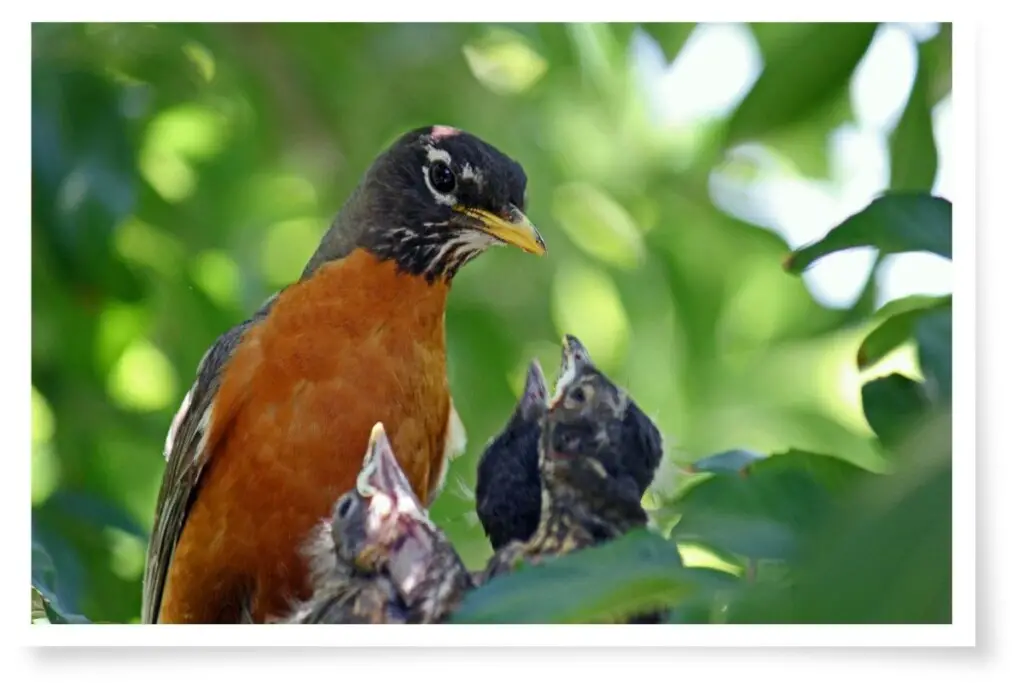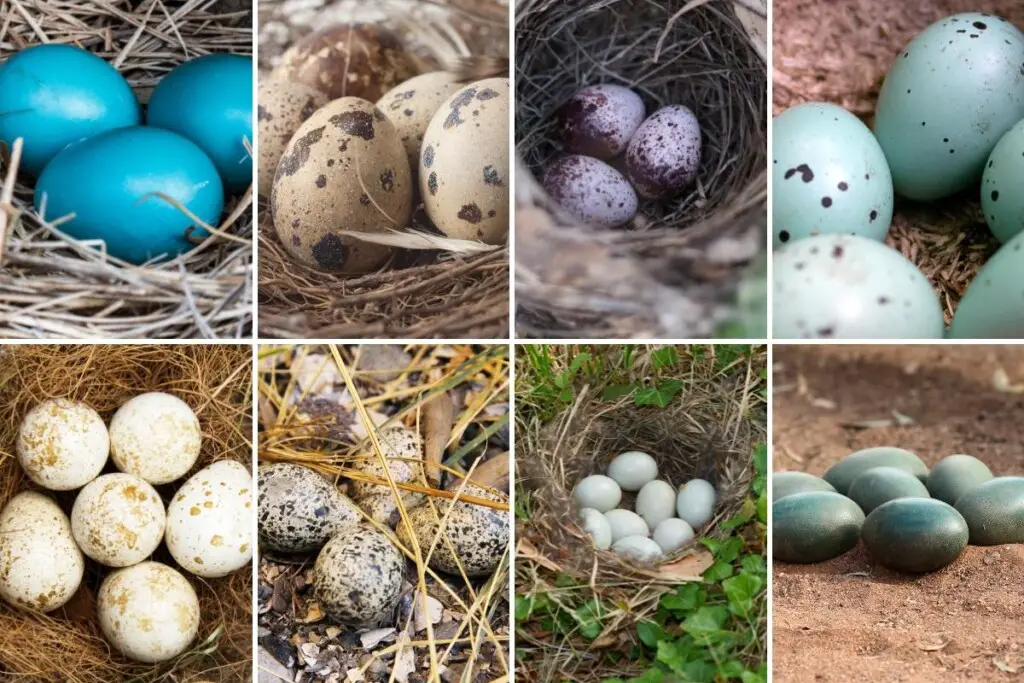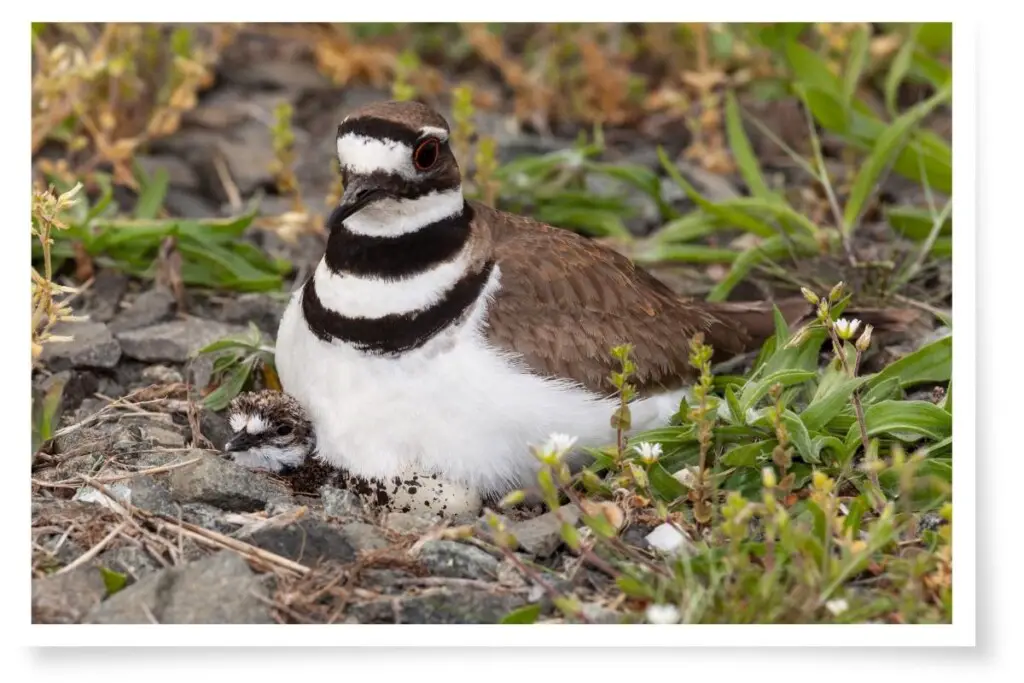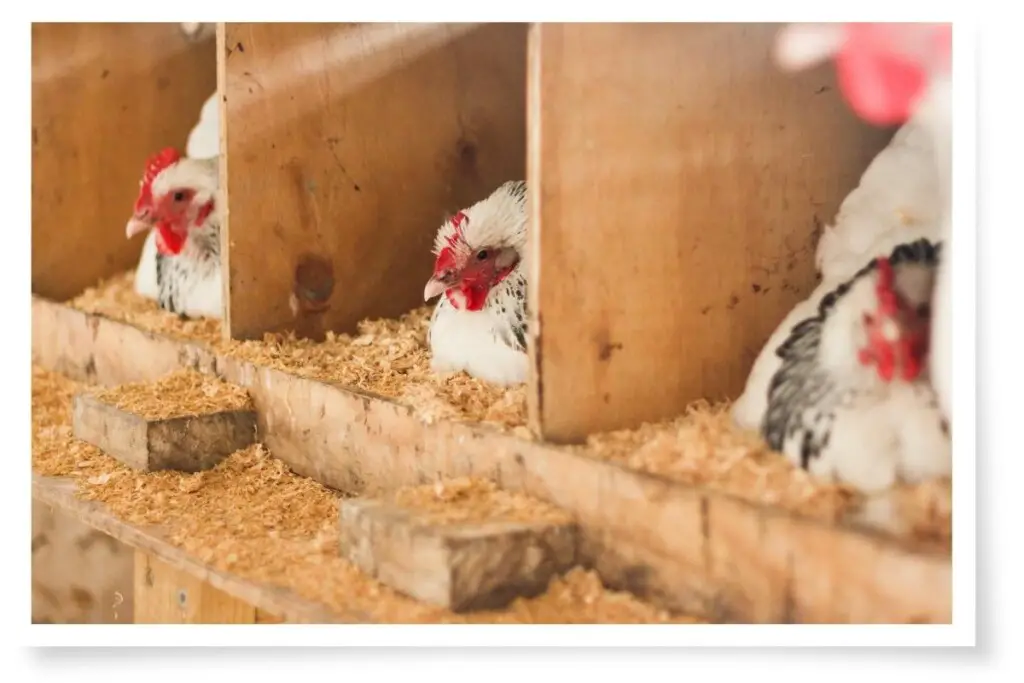It is common knowledge that a lot of birds lay eggs. Most of us have seen footage of bird’s eggs in a nest, or seen them with our own eyes. But are there any birds that give birth to live young? You are about to discover the answer…
There are no birds that give birth to live young. All birds give birth to young that are encased in the protective shells of eggs. Once a female bird’s egg yolk is fertilized, it takes around 24 hours before the egg is laid. A lot of amazing things occur within a bird’s body to form a single egg.
In the remainder of this article, we’re going to explore the miraculous process of how birds develop within the egg. There is so much fascinating information around the subject of how birds give birth and I am not ashamed to admit that I am excited to be sharing it with you. Settle in and prepare your mind to be blown…

Why Do Birds Lay Eggs?
As with most aspects of bird anatomy or biology, why birds lay eggs has everything to do with their ability to fly.
Birds lay eggs because the weight of live young inside their bodies would be excessive. This extra weight would render a female bird flightless for the entire gestation period; not only making her vulnerable, but also her entire brood. Eggs allow the young to grow protected, outside of the body.

Carrying baby birds inside of her, a female bird would be motionless for days or weeks, unable to gather food for herself which would also be no good for the young birds inside her.
There are endless examples such as this in the bird world where nature has proven to be incredibly ingenious.
Are small birds smart? Find out in this article here on Birdwatch World.
How Do Birds Make Eggs?
During the breeding season, the ovary high inside the abdomen of a female bird becomes enlarged and begins producing eggs or ‘ova’.

In most birds, only the left ovary develops and the right ovary and oviduct diminish considerably. This is thought to be an adaption that reduces ballast for flight but could also be an adaptation that protects developing eggs.
If a female had both ducts working simultaneously, the possibility of two eggs side by side in the parallel oviducts being damaged by a sudden jolt to the bird’s body would be quite high.
However, there are some species in which both ovaries are fully developed. There are even some duck species that can lay two eggs in one day.

When enlarged, the ovary resembles a bunch of various-sized grapes, each ‘grape’ eventually becoming the yolk of a complete egg.
The Egg’s Journey Down The Oviduct
Certain hormones secreted from the pituitary gland signal an egg to discharge from the follicle which holds it to the ovary. As it makes its way down the duct leading from the ovary, the ovum is joined by a bag of yolk that will provide the food the developing chick will need.

On the way, the egg is fertilized by a single sperm. In some species, this may be one of the millions or even billions of sperm delivered by the male hours, days, or even weeks earlier. In domestic chickens, the sperm make the journey up the oviduct in as little as 26 minutes.
As the egg travels further down the oviduct, it enters the magnum. This portion of the oviduct is lined with glandular and ciliated (covered with tiny hair-like projections) cells which secrete layers of albumen (egg-white) around the ovum. In domestic hens, the egg remains in the magnum for around 3 hours.

From the magnum, the developing egg moves onto the isthmus. In chickens, it will spend around one hour and fifteen minutes here. This is where the egg gets the shell membranes.
It is in the next stage of an egg’s journey where the magic happens. When it reaches the uterus, where it will spend around 18 to 20 hours (in chickens) the egg receives more albumen and its limy shell.
The shells of eggs are made of calcium carbonate which is a white substance. Birds must get this calcium from their diet and will go to any lengths to get it. Blue Jays in North America for example will peck away at house paint and eat the paint chips as they are rich in calcium.

But bird eggs are not white, they are different colors so why how do they get their color?
Do birds see color the same way we do? You’ll find out in this post here on my blog.
How Eggs Get Their Color
During its last few hours in the uterus, a bird egg will become pigmented. There are glands in a bird’s uterus that secrete pigments that color the egg and result in the spots and other markings we see on some bird eggs.
The pattern of pigmenting on an egg depends on its motion while in the uterus. If it spins while the pigment is being applied, then it will be somewhat striped; if it remains still, this will result in spots or blotches forming on the shell.

How Long Does It Take For A Bird To Lay An Egg?
The entire process described above happens in around 24 hours for a domestic chicken and around 41 hours for a pigeon. It is different in most bird species.
The important factor is that it happens as fast as possible. Female birds do not want to be burdened with carrying eggs for too long. A completed egg can be anywhere from 2 to 12 percent of the female’s body weight.
It also takes a lot of energy to produce each egg and depending on the species, the female can lay between 2 and 15 eggs in a clutch.

It makes sense for the bird to lay the eggs as quickly as possible. This way, she can replenish her energy levels and incubate the eggs, an activity shared with or even handled solely by the male in some species.
Find out how long birds stay in the nest in this post here on Birdwatch World.
What Happens Inside The Egg?
Once the egg has formed inside the chicken’s uterus, it is pushed out of her body by the mucus glands and muscular walls of her vagina. What happens after it enters the outside world is truly remarkable.
Modern science allows us to see what is going on inside an egg as the embryo forms and grows into a fully-formed bird. The video below from SmarterEveryDay on YouTube shows an exhibit at the Exploratorium in San Francisco where you can view the stages of embryo growth in real, live eggs:
It’s just incredible to see the tiny little heart beating inside the yolk of the egg!
For a more detailed view of the process happening inside the egg, watch this digital animation of a chicken embryo inside the egg:
Do All Birds Lay Unfertilized Eggs?
Unless you have been a vegan all your life, you have most probably eaten a chicken egg at one time or another. The eggs we buy from the supermarket are simply unfertilized eggs that chickens produce on a daily basis.
This is a process we have manipulated in order to fill the demand for eggs in our diets. Chickens, if left to follow their natural behavior would only lay enough eggs until they had a sufficient brood. As we continually take their eggs away, they simply continue to lay.
Why are most birds afraid of humans? Find out in this article here on my blog.

We also give hormones to chickens that stimulate the laying of eggs and keep their bodies in a perpetual state of egg production. Without this, after laying, their reproductive systems would most probably shrink back to their smaller state until the next breeding season.
As the domestication of the chicken happened over 6000 years ago, it is hard to imagine how the reproductive system of a chicken functioned in the wild. There is however no logical reason for them to be constantly laying eggs every single day so I would have to think they did not do this.
In the wild, unfertilized eggs seem to be a rare occurrence. This is because there are a great number of male birds available during the breeding season to mate with females and fertilize their eggs. In the case of domestic birds, we tend to keep males and females apart to control the production of offspring and eggs alike.

Life In An Unfertilized Egg
There are even cases of unfertilized eggs that produce embryos and healthy young. In Beltsville Small White Turkeys, this is quite common. This is called parthenogenesis, a process more common in lizards, where a female reproduces by herself without the help of a male. This is perhaps another way in which birds are like reptiles.

Read more about how closely birds are related to reptiles in this post here on Birdwatch World.
Cases of parthenogenesis have been recorded in many domestic species, perhaps most recently in 2021. Two California Condors at the San Diego Zoo were found to have been born through parthenogenesis. This is yet another way in which birds continue to amaze and intrigue us.
References
- The Life Of Birds – Joel Carl Welty
- Newly Recorded Condor ‘Virgin Birth’ Is Another Way Birds Are Like Reptiles – Audubon.org
- What It’s Like To Be A Bird – David Allen Sibley
